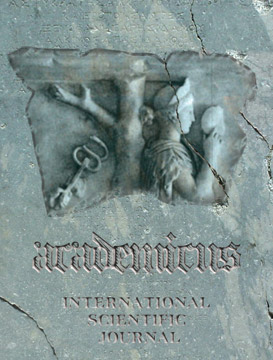Title:
Dictionary Use as Word Solving Strategy (WSS)
Full Reference List:
| 1. | Hosenfeld, C. 1977. A preliminary investigation of the reading strategies of successful and nonsuccessful second language learners. System, 5:2, 110- 123 S Schmitt,N (1997). Vocabulary: Description, acquisition and pedagogy. Cambridge: Cambridge Universit |
| 2. | Rubin, J. (1975). What the “good language learner” can teach us. TESOL Quarterly. |
| 3. | Oxford, R. L. (1990a). Language learning strategies: What every teacher should know. Boston: Heinle & Heinle. |
| 4. | O’Malley, J. M., & Chamot, A. U. (1990). Learning strategies in second language acquisition. New York: Cambridge University Pres. |
| 5. | Green, J. M. and R. Oxford. 1995. A closer look at learning strategies, L2 proficiency, and gender. TESOL Quarterly. |
| 6. | MacIntyre, P.D., and K.A. Noels (1996). Using social-psychological variables to predict the use of language learning strategies. Foreign Language Annals. |
| 7. | Meara, P. (1980). Vocabulary acquisition: A neglected aspect of language learning. Language Teaching and Linguistics Abstracts. |
| 8. | Lewis, M. (1993). The lexical approach. Hove, England: Language Teaching Publications. |
| 9. | Wenden, A. L. 1987. How to be a successful language learner: Insights and perceptions from L2 learners. In Wenden, A.L. and J. Rubin (eds.) Learner strategies in language learning. Englewood Cliffs: Prentice-Hall. |
| 10. | Oxford, R. (1990). “Language Learning Strategies“What every teacher should know.” Boston, MA: Heinle & Heinle. |
| 11. | Schmitt, N. (1998).Tracking the incremental acquisition of second language vocabulary: A longitudinal study. Language Learning. |
| 12. | Meara,P(1997).Models of vocabulary acquisition.In N.Schmitt & M.McCarthy (Eds), Vocabulary: Description,acquition and pedagogy. Cambridge;Cambridge University Press. |
| 13. | Coady, J. (1993). Research on ESL/EFL vocabulary acquisition: Putting it in context. In T. Huckin & M. Haynes & J. Coady (Eds.), Second language reading and vocabulary learning (pp. 3-23). Norwood, N.J.: Ablex. |
| 14. | Rubin, J. 1987a. Learner strategies: Theoretical assumption, research history and typology. In A. Wenden and J. Rubin (eds.) Learner strategies in language learning. Englewood Cliffs: Prentice/Hall. |
| 15. | Gu, Y. 2003b. Vocabulary learning in a second language: Person, task, context and strategies. TESL-EJ, 7:2. |
| 16. | Ahmed,M.(1988).Vocabulary Learning Strategies:A Case of Study of Sudenese Learners in English.Unpublished Ph.D Thesis. University of North Wales Bangor. |
| 17. | Thompson, G. (1987). Using bilingual dictionaries. ELT Journal, 41, 282-286. |
| 18. | Jusuf,M (2012). Ndikimi I gjuhës amtare në përvetësimin e vokabularit të gjuhës angleze si gjuhë e dytë te nxënësit shqiptarë në R. e Maqedonisë (Punim doktorature, Shkup 2012, f. 87). |
| 19. | Tomaszczyk, J. 1979. ‘Dictionaries: users and uses’. Glottodidactica vol. XII (103- 119). Uniwersytet Im. Adama Mickiewicza W Poznaniu. p.46 Nesi, H. & Meara, P. (1994). Patterns of misinterpretation in the productive use of EFL dictionary definitions. Sy |
| 20. | Underhill, A. (1980). Use your dictionary. London: Oxford University Press.p.188. |
| 21. | Summers, D. (1988). The role of dictionaries in language learning. In R. Carter & M. McCarthy (Eds.), Vocabulary and language teaching (pp. 111-125). London: Longman. |
| 22. | Scholfield, P. (1982). Using the English dictionary for comprehension. TESOL Quarterly, 16, 185-194. |
| 23. | Oxford, R. 1990a. Language Learning Strategies: What every teacher should know. New York: Newbury House.p.47. |
Back to article
Academicus
International Scientific Journal
pISSN 2079-3715
eISSN 2309-1088
Address:
Sheshi i Flamurit, Rruga Muze
Al-9401 Vlorë, Albania
Tel: +355 68 60 60 555
info@academicus.edu.al
https://academicus.edu.al


